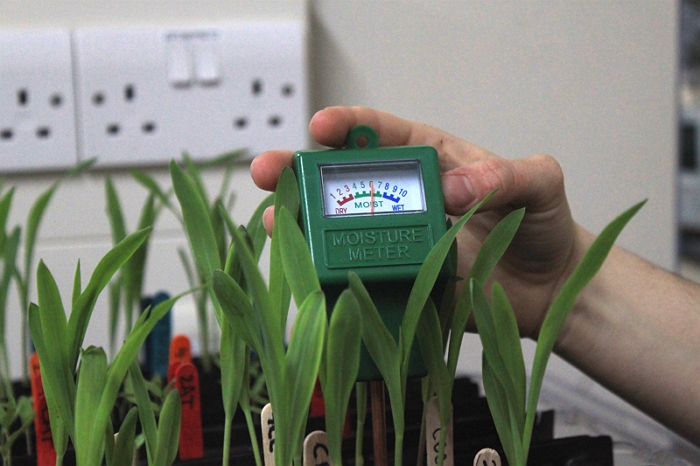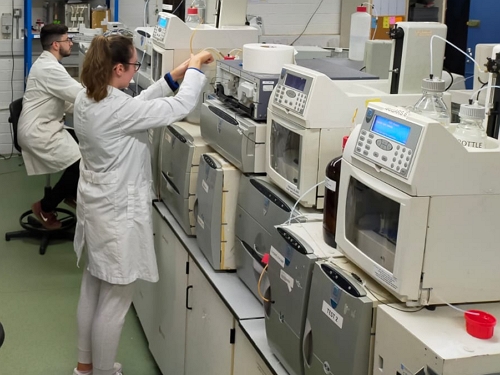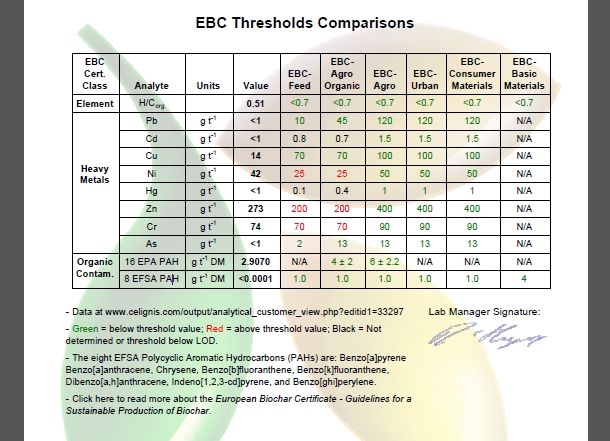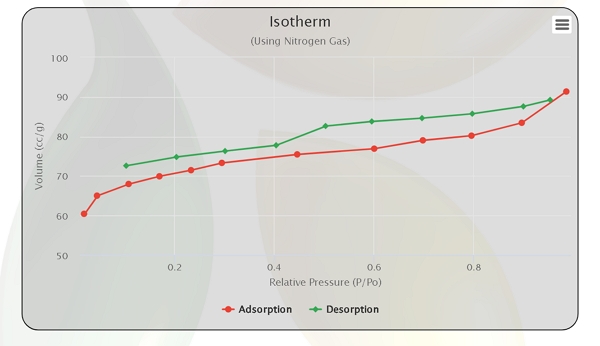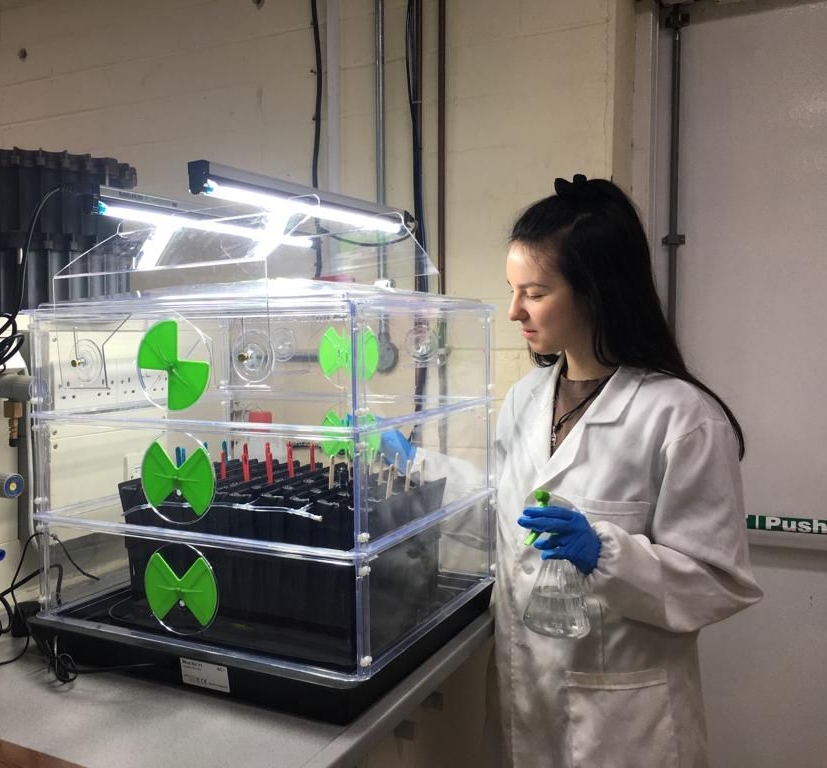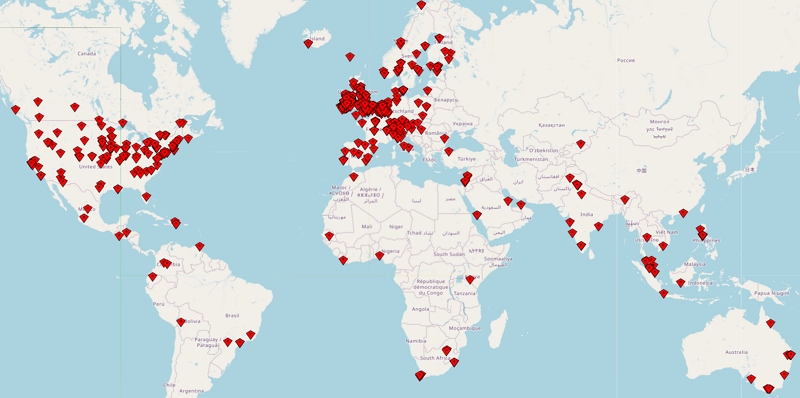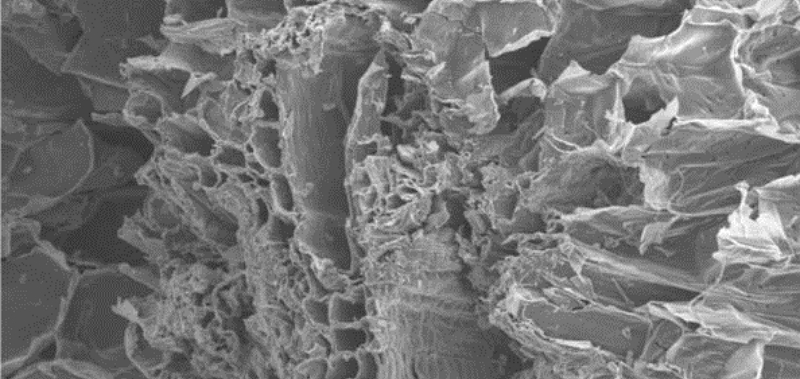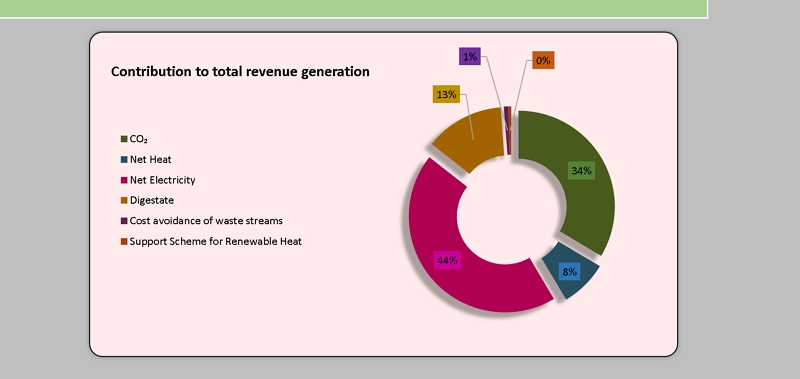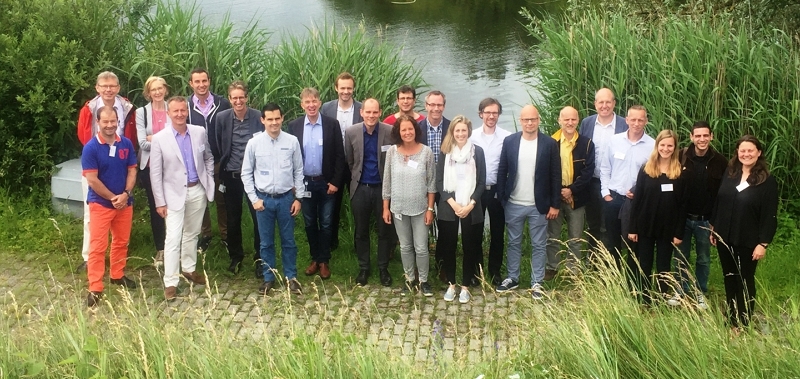Biochar for Soil Amendment and Plant Growth Promotion
Biochar can be made from a variety of feedstocks, including wood, agricultural residues, and municipal solid waste.
The use of biochar in soil amendment has several benefits. Firstly, it improves soil fertility by increasing the soil's capacity to retain water and nutrients. Biochar has a high surface area, which provides a habitat for microorganisms and increases the soil's ability to hold onto nutrients. Secondly, biochar can help to mitigate climate change by sequestering carbon in the soil. This is because biochar is stable and does not break down easily, which means that the carbon in biochar remains in the soil for a long time.
Biochar can also help to reduce greenhouse gas emissions from agriculture by reducing the need for synthetic fertilizers, which are energy-intensive to produce and release large amounts of nitrous oxide, a potent greenhouse gas.
The benefits of biochar for plant growth promotion are due to its effects on soil physical, chemical, and biological properties. Biochar improves soil physical properties by increasing soil porosity, which enhances water infiltration and aeration. This is particularly important in compacted soils, where water and air movement are restricted.
Biochar also improves soil structure by promoting the formation of stable aggregates, which helps to prevent soil erosion and increase the stability of soil organic matter.
Biochar also improves soil chemical properties by increasing soil pH and cation exchange capacity (CEC). This means that biochar can help to neutralize acidic soils and increase the availability of essential nutrients such as calcium, magnesium, and potassium. Biochar can also adsorb pollutants and prevent their uptake by plants.
The use of biochar in agriculture is still in its early stages, and there is much to learn about its effectiveness in different soils and under different management practices. However, there is growing interest in the use of biochar as a sustainable tool for improving soil fertility, mitigating climate change, and promoting plant growth. Researchers are exploring new ways to produce biochar and optimize its properties for specific soil types and crops.
Analyses at Celignis to Evaluate Biochar for Soil Amendment
- The type of feedstock used to produce the biochar.
- The pyrolysis conditions employed for biochar production.
- The resulting physical and chemical properties of the char.
- Type of soil to which the biochar will be amended.
- The plant(s) to be grown on this amended soil.
Major and Minor Elements in Biochar
Many of the major elements can be beneficial for plant growth, for example potassium plays a vital role in photosynthesis whilst phosphorus is involved in energy transfer processes and the formation of nucleic acids. Furthermore, the presence of certain elements, such as calcium and magnesium, can affect the soil pH, influencing the availability of nutrients and the activity of soil microorganisms. As a result, elemental analysis can help to predict the impact of biochar on soil pH and inform decisions on its application in specific soil types.It is also important to consider that some heavy metals can pose potential risks to plants, soil organisms, and human health. As a result, biochar with high heavy metal concentrations may not be suitable for soil amendment, as it can lead to the accumulation of toxic elements in the soil, plants, and the food chain.
The European Biochar Certificate organisation (EBC), sets an upper threshold concentration for certain heavy metals in biochar, with these limits vaying according to the planned market application. (e.g. lead can not exceed 45ppm when biochar is used in the Agro-Organic sector, rising to 120 ppm the biochar is to be used in consumer materials). At Celignis we check as to whether the values for each heavy metal are above or below the threshold values for each of the EBC application sectors and provide the results in a PASS/FAIL table for each feedstock according to the specific sector and test.
Request a QuoteElements
The electrical conductivity of biochar depends on several factors, including its feedstock, production temperature, and post-treatment processes. Feedstock type and composition can affect the final properties of biochar, with wood-derived biochars generally having higher electrical conductivities than those derived from agricultural residues. The pyrolysis temperature also influences the electrical conductivity, with higher temperatures (above 500 oC) leading to the formation of more conductive structures.
The electrical conductivity of biochar allows it to effectively retain and exchange nutrients in the soil, particularly cations like potassium, calcium, and magnesium. This property is crucial for soil fertility, as it helps plants absorb essential nutrients more efficiently. The electrical conductivity of biochar can enhance soil microbial activity by facilitating the transfer of electrons between microbes and their environment. This electron transfer is essential for various microbial processes, such as nutrient cycling, and can lead to an overall increase in soil fertility. The conductive properties of biochar can help mitigate the spread of soil-borne pathogens by generating reactive oxygen species (ROS) and inhibiting the growth of harmful microorganisms. This, in turn, can lead to healthier plant growth and reduced disease incidence.
Request a QuoteElectrical Conductivity
The water holding capacity of biochar is influenced by several factors, including its feedstock, and the conditions used for pyrolysis. Additionally, post-treatment processes, such as oxidation and activation, can modify the surface chemistry and porosity of biochar, potentially affecting its water holding capacity. For example, oxidizing biochar can introduce hydrophilic functional groups, increasing its affinity for water.
Biochar with good water holding capacity can offer several benefits when used in soil amdendment, including:
- Improved Soil Water Retention: This can help plants better tolerate water stress and reduce the need for irrigation, conserving water resources.
- Enhanced Plant Growth and Yield: Resulting from a more consistent water supply to plants, especially during periods of low rainfall.
- Mitigation of Soil Salinization: By diluting salt concentrations in the soil and promoting the leaching of excess salts.
- Support for Soil Microorganisms: By maintaining adequate moisture levels, which in turn can promote nutrient cycling and soil fertility.
Biochars derived from plant materials with higher lignin content, such as wood, tend to have a higher CEC than those produced from agricultural residues. Lower pyrolysis temperatures (below 500 oC) typically result in biochars with a higher CEC, as higher temperatures can lead to the degradation of negatively charged functional groups responsible for cation exchange.
Biochar with a good CEC can offer several benefits when used in soil amdendment, including:
- Enhanced Nutrient Use Efficiency: By retaining and exchanging cations in the soil, allowing plants to absorb essential nutrients more effectively.
- Amelioration of Soil Acidity: Through the biochar buffering soil acidity and promoting the availability of essential nutrients, particularly in acidic soils.
- Mitigation of Soil Salinization: By diluting salt concentrations in the soil and promoting the leaching of excess salts.
- Mitigation of Heavy Metal Contamination: High CEC biochar can contribute to the immobilization of heavy metals in contaminated soils, reducing their bioavailability and potential toxicity to plants.
Polycyclic Aromatic Hydrocarbons (PAH)
Polycyclic aromatic hydrocarbons (PAHs), are a class of organic compounds comprising multiple aromatic rings. They can be formed during the pyrolysis of biomass and accumulate in biochar with their concentrations and types dependent on several factors, including the type of feedstock, pyrolysis temperature, residence time, and post-treatment processes.The presence of PAHs in biochar is an important concern when using it as a soil amendment, as these compounds can pose potential risks to the environment, including:
- Toxicity to Plants and Soil Microorganisms.
- Bioaccumulation and Transfer to the Food Chain: The consumption of crops grown in biochar-amended soils with high PAH concentrations can lead to the ingestion of these harmful compounds.
- Environmental Persistence: PAHs are known to be persistent in the environment and can accumulate in soil over time, leading to long-term ecological risks.
Click here to read our dedicated webpage covering our analyses of PAHs in biochar.
Request a QuotePAH
- Water Holding Capacity: A biochar with a high surface area and porosity can more water, improving the soil's water holding capacity.
- Nutrient Retention and Release: Biochars with high surface areas and porosity can provide more active sites for nutrient adsorption, improving soil fertility and plant nutrient uptake.
- Cation Exchange Capacity: CEC increases with surface area.
- Microbial Habitat: A biochar with high surface area and porosity can promote the establishment of diverse microbial communities, which can enhance nutrient cycling and improve soil health.
- Pollutant Adsorption: Biochars with high surface areas and porosity can adsorb and immobilize pollutants, such as heavy metals and organic contaminants, reducing their bioavailability and potential toxicity to plants and soil organisms.
Request a QuoteSurface Area
Scanning Electron Microscopy (SEM)
Scanning electron microscopy is a widely used technique for characterizing the morphology, structure, and composition of materials at the micro- and nanometer scales. In the case of biochar, SEM analysis can provide valuable insights into its surface properties, porosity, and elemental composition, which are crucial factors that influence its performance as a soil amendment.SEM analysis is a very useful companion analysis to the surface area and porosity analysis of biochar as it helps to visualize the size, shape, and distribution of pores in biochar.
SEM analysis can provide valuable information on the effects of various production parameters, such as feedstock, pyrolysis temperature, and post-treatment processes, on the properties of biochar. This can help optimize the production process to create biochars with desired characteristics for specific soil amendment applications.
Request a QuoteSEM
- Soil pH Modification: The ability of biochar to modify soil pH can influence nutrient availability, as certain nutrients are more readily available at specific pH levels.
- Enhancement of Soil Microbial Activity: Soil pH can also affect the activity of soil microorganisms, which play a crucial role in nutrient cycling and decomposition of organic matter.
- Alleviation of Aluminum Toxicity: In acidic soils, high levels of soluble aluminum can be toxic to plants and inhibit root growth. By neutralizing soil acidity, biochar can reduce aluminum solubility and alleviate its toxic effects on plants.
Tests at Celignis to Assess the Effects of Biochar on Plant Growth
- Type of biochar used (e.g. compare between biochars from different feedstocks or between biochars produced from the same feedstock but using different pyrolysis conditions or different upgrading approaches).
- Biochar loading rate (i.e. ratio of soil to biochar).
- Soil used.
- Plant type (examples of plants we have used include potato, tomato, corn, and lettuce).
We can collect various data associated with these trials, ranging from crop yields to detailed analyses of the physical and chemical properties of the plant and soil, as detailed below.
Germination and Plant Growth
In our standard Biochar Plant Growth Trials package (P388) we collect the following data:- Time to germination.
- Mean shoot length (at weeks 1, 2, 3 and 4).
- Shoot weight at week 4.
- Root weight and mean root length at week 4.
Plant Health Analysis
Relevant analyses that we can undertake to see the effect of biochar supplementation on plant health include: pigments (highly dependent on the nutrient uptake efficiency of the plant), leaf lamella size, and nutrient uptake. We can also perform stomata count, if the leaf type allows such analysis (which can be correlated to water stress resistance)These results can then be correlated with the physical and chemical characteristics of biochar and plant growth results.
Soil Biology Analysis
Soil biology analysis can include: soil respiration test, bacterial count, fungal count (fungi to bacteria ratio), and soil enzymes (C-degrading, N mineralisation and P solubilisation enzymes).These results can then be correlated with the physical and chemical characteristics of biochar and plant growth results.
This is a separate test that we can undertake to evaluate the potential phytotoxicity of biochar when applied as a soil amendment. We use seeds of a fast-growing and sensitive crop (e.g. lettuce or radish), and expose them to different concentrations of biochar or biochar-amended soil under controlled laboratory conditions. The seeds are typically placed in Petri dishes containing a moistened filter paper or a mixture of the tested biochar and a growth medium, such as sand or soil. The dishes are then incubated in a growth chamber or greenhouse with controlled temperature and light conditions.
After a predetermined period (usually 3-7 days), the germination rate and the growth of the seedlings (e.g., root and shoot length) are assessed. The results are compared to a control group of seeds exposed to the unamended growth medium or a non-toxic reference material.
If the germination inhibition test indicates that biochar has a negative impact on seed germination or seedling growth, we can potentially undertake further investigations to determine the cause of the phytotoxicity and identify possible mitigation strategies.
Additional Information on Evaluating Biochar for Soil Amendment Applications and Undertaking Plant Growth Trials

Sajna KV
Bioanalysis Developer
PhD
<p style="text-align: left;">Our Biomass Detective! Designs, tests, optimizes and validates robust analytical methods for properties of relevance to the various biochar market applications.</p>

Lalitha Gottumukkala
Chief Innovation Officer
PhD
<p style="text-align: left;">A serial innovator managing multiple projects. Has particular expertise related to the upgrading of biochar and on the assessment of its impact on plant productivity and soil health.</p>
Global Recognition as Biomass and Biochar Experts
Feedstock Evaluation
Biochar Production
Biochar Analysis
Biochar Combustion Properties
Analysis of PAHs in Biochar
Surface Area and Porosity of Biochar
Thermogravimetric Analysis of Biochar
Biochar Upgrading
Biochar for Carbon Sequestration
Technoeconomic Analyses of Biochar Projects
Research Project Collaborations
Hydrothermal carbonization (HTC) research has mainly focused on primary char production, with limited attention to secondary char, which is formed through polymerization and condensation of dissolved organic compounds in the liquid phase. This research aims to address this gap via an experimental investigation of the impact of stirring on the mass and carbon balance of HTC reaction products, surface functional groups, and surface morphology of secondary char, using fructose as a model compound. A 3D hydrodynamic simulation model was developed for a two-liter HTC stirred reactor. The experimental results indicated that stirring did not significantly influence the pH, mass, carbon balance, and surface functional groups of secondary char produced under the range of experimental conditions (180 C, 10% biomass to water (B/W) ratio, and a residence time of 0-120 min) studied. Nonetheless, it was observed that a stirring rate of 200 rpm influenced the morphology and shape of the secondary char microspheres, leading to a significant increase in their size i.e., from 1-2 um in unstirred conditions compared with 70 um at a stirring rate of 200 rpm. This increase in size was attributed to the aggregation of microspheres into irregular aggregates at stirring rates > 65 rpm and residence times > 1 h. The hydrodynamic model revealed that high turbulence of Re > 104 and velocities > 0.17 m s-1 correlated with regions of secondary char formation, emphasizing their role in particle aggregation. Particle aggregation is significant above a stirring rate of 65 rpm, which corresponds to the onset of turbulent flow in the reactor. Finally, a mechanism is proposed, based on reactor hydrodynamics under stirred conditions, that explains secondary char deposition on the reactor walls and stirrer. | |
A dried dairy processing sludge (sludge from wastewater treatment of an effluent from a milk processing plant) was pyrolysed in a single-particle reactor at different temperatures from 400 C to 900 C. NH3 and HCN were measured online and offline by means of FTIR as well as by cumulative sampling in impinger bottles (in 0.05 M H2SO4 and 1 M NaOH, respectively) and analysed by photometric method. NO and NO2 were measured online using a nitric oxide analyser while N2O was measured by FTIR. Nitrogen (N) in the sludge and in the remaining char, char-N, was determined. Moreover, tar content in pyrolysis gas was measured and tar-N was determined. The results with respect to N mass balance closure are discussed. The different measurements techniques are compared. For pyrolysis at 520 and 700 nitrogen in the gas phase was mainly contained as N2 (36 % and 40 % respectively), followed by NH3 (15 % and 18 %), tar-N (10 % and 9 %), HCN (1 % and 3 %), NO (1 %) and NO2 (0.2 %). The dairy processing sludge has very specific properties with organic-N present predominantly as proteins and a high content of inherent Ca. These characteristics affected the distribution of N. The amount of char-N was higher while the amount of tar-N lower than for sewage sludge from literature, at comparable pyrolysis temperature. | |
Dairy processing sludge (DPS) is a byproduct generated in wastewater treatment plants located in dairy (milk) processing companies (waste activated sludge). DPS presents challenges in terms of its management (as biosolids) due to its high moisture content, prolonged storage required, uncontrolled nutrient loss and accumulation of certain substances in soil in the proximity of dairy companies. This study investigates the potential of hydrothermal carbonization (HTC) for recovery of nutrients in the form of solid hydrochar (biochar) produced from DPS originating from four different dairy processing companies. The HTC tests were carried out at 160 C, 180 C, 200 C and 220 C, and a residence time of 1h. The elemental properties of hydrochars (biochars), the content of primary and secondary nutrients, as well as contaminants were examined. The transformation of phosphorus in DPS during HTC was investigated. The fraction of plant available phosphorus was determined. The properties of hydrochar (biochar) were compared against the European Union Fertilizing Products Regulation. The findings of this study demonstrate that the content of nutrient in hydrochars (biochars) meet the requirements for organo-mineral fertilizer with nitrogen and phosphorus as the declared nutrients (13.9-26.7%). Further research on plant growth and field tests are needed to fully assess the agronomic potential of HTC hydrochar (biochar). | |
Disposal of waste-activated sludge [dairy processing sludge, (DPS)] from wastewater treatment plants located in milk processing companies is an increasing concern. DPS is usually applied to farmlands in the vicinity of the dairy companies. This practice is becoming unsustainable due to uncontrolled nutrient loss and potential soil contamination. We propose to recover nutrients in the form of biochar. This paper examines the properties of biochars obtained from slow pyrolysis of DPS. DPS samples were pyrolyzed at laboratory and pilot scale at 600 and 700 C. The elemental properties of biochars, the content of primary and secondary nutrients, as well as contaminants were examined and compared against the European Union Fertilizing Products Regulation. The biochars meet the specified limits for hydrogen-to-organic carbon ratio, chloride, and polycyclic aromatic hydrocarbons intended for gasification and pyrolysis component category materials. In six out of eight biochars, the content of phosphorus (P) as a single declared nutrient and the level of contaminants meet those required for an organo-mineral fertilizer. Only two biochars meet the required concentrations of nitrogen, phosphorus, and potassium. A minimum solid content of 30% in DPS is required to make the process of biochar production energetically sustainable. | |
Anaerobically digested sewage sludge mixed with forest residues was pyrolysed at 800 C, at laboratory and pilot scale. The study quantified differences in char and gas yields for tests carried out in a simple fixed bed laboratory reactor and rotating retort pyrolyser at pilot scale, when the residence time of feedstock was 10 min in both cases. The yield of char from pilot scale was 4 % lower than from laboratory scale while the yield of gas was 15.7 % higher. During the pilot scale pyrolysis of anaerobically digested sewage sludge blended with forest residues the gas quality for energy recovery applications was assessed and the fate of impurities (tar, NH3 and H2S) was investigated. The raw pyrolysis gas contained 14.6 g/Nm3 of tar, 36.9 g/Nm3 of NH3 and 793 ppm of H2S. Sixteen N-containing tar species were identified of which pyridine, propenenitrile, 2-methyl-, benzonitrile, and indole are found to be the most abundant. The yield of N-containing tar compounds accounted for approx. 12 % of total tar content. Conditioned pyrolysis gas contained 7.1 g/Nm3 of tar, 0.036 g/Nm3 of NH3 and 119 ppm of H2S. Benzene was by far the most abundant tar compound followed by toluene and styrene. The specifications of the used internal combustion engine were exceeded due to the sum of tar compounds such as fluorantrene and pyrene with 4+ aromatic rings (at 0.0015 g/Nm3) and NH3 content The effectiveness and sustainability of energy recovery in wastewater treatment can be improved using forest industry by-products. | |
Adsorption of six contaminants of emerging concern (CECs) - caffeine, chloramphenicol, carbamazepine, bisphenol A, diclofenac, and triclosan - from a multicomponent solution was studied using activated biochars obtained from three lignocellulosic feedstocks: wheat straw, softwood, and peach stones. Structural parameters related to the porosity and ash content of activated biochar and the hydrophobic properties of the CECs were found to influence the adsorption efficiency. For straw and softwood biochar, activation resulted in a more developed mesoporosity, whereas activation of peach stone biochar increased only the microporosity. The most hydrophilic CECs studied, caffeine and chloramphenicol, displayed the highest adsorption (22.8 and 11.3 mg g-1) onto activated wheat straw biochar which had the highest ash content of the studied adsorbents (20 wt%). Adsorption of bisphenol A and triclosan, both relatively hydrophobic substances, was highest (31.6 and 30.2 mg g-1) onto activated biochar from softwood, which displayed a well-developed mesoporosity and low ash content. | |
Magnetic carbons can significantly lower the costs of wastewater treatment due to easy separation of the adsorbent. However, current production techniques often involve the use of chlorinated or sulfonated Fe precursors with an inherent potential for secondary pollution. In this study, ochre, an iron-rich waste stream was investigated as a sustainable Fe source to produce magnetic activated biochar from two agricultural feedstocks, softwood and wheat straw. Fe doping resulted in significant shifts in pyrolysis yield distribution with increased gas yields (+50%) and gas energy content (+40%) lowering the energy costs for production. Physical activation transformed ochre to magnetite/maghemite resulting in activated magnetic biochars and led to a 4-fold increase in the adsorption capacities for two common micropollutants - caffeine and fluconazole. The results show that Fe doping not only benefits the adsorbent properties but also the production process, leading the way to sustainable carbon adsorbents. | |
The majority of the sludge from the treatment of wastewater in milk processing plants is land spread. The drawbacks of land spreading include local oversupply due to high transport costs, which results in sludge being spread on lands in the vicinity of the dairy factories. Local oversupply can lead to accumulation of certain substances in soil through annual application over many years. Therefore, in the long term, there is a need for alternative methods to recover energy and nutrients from increasing volumes of sludge generated from dairy processing. Pyrolysis offers a potential alternative to land spreading, which can reduce health and environmental risks, while providing an avenue for the recovery of energy and nutrients. Pyrolysis allows energy recovery in the form of a high calorific value pyrolysis gas and a char which may be used as a soil amendment. In this study pyrolysis of dried dairy sludge was carried out at pilot scale. The results indicate that a dried biological sludge can be successfully pyrolysed and when mixed with wood the resulting char meets European Biochar Certificate criteria regarding carbon content. Most of the initial energy content of the feedstock was retained in the pyrolysis gas prior to cleaning, 53%, compared to 34.5% in the char and 1.5% in the tar. For the pyrolysis gas after cleaning (mainly cracking in presence of air) the initial energy content of the feedstock retained in the gas was only slightly higher than that retained in the char, 39.2% versus 34.5%, while the tar accounted for 0.8% of the initial energy content. | |
Eucalypts can be very productive when intensively grown as short rotation woody crops (SRWC) for bioproducts. In Florida, USA, a fertilized, herbicided, and irrigated cultivar planted at 2471 trees/ha could produce over 58 green mt/ha/year in 3.7 years, and at 2071 trees/ha, its net present value (NPV) exceeded $750/ha at a 6% discount rate and stumpage price of $11.02/green mt. The same cultivar grown less intensively at three planting densities had the highest stand basal area at the highest density through 41 months, although individual tree diameter at breast height (DBH) was the smallest. In combination with an organic fertilizer, biochar improved soil properties, tree leaf nutrients, and tree growth within 11 months of application. Biochar produced from Eucalyptus and other species is a useful soil amendment that, especially in combination with an organic fertilizer, could improve soil physical and chemical properties and increase nutrient availability to enhance Eucalyptus tree nutrition and growth on soils. Eucalypts produce numerous naturally occurring bioproducts and are suitable feedstocks for many other biochemically or thermochemically derived bioproducts that could enhance the value of SRWCs. | |
Hydrothermal carbonization (HTC) research has mainly focused on primary char production, with limited attention to secondary char, which is formed through polymerization and condensation of dissolved organic compounds in the liquid phase. This research aims to address this gap via an experimental investigation of the impact of stirring on the mass and carbon balance of HTC reaction products, surface functional groups, and surface morphology of secondary char, using fructose as a model compound. A 3D hydrodynamic simulation model was developed for a two-liter HTC stirred reactor. The experimental results indicated that stirring did not significantly influence the pH, mass, carbon balance, and surface functional groups of secondary char produced under the range of experimental conditions (180 C, 10% biomass to water (B/W) ratio, and a residence time of 0-120 min) studied. Nonetheless, it was observed that a stirring rate of 200 rpm influenced the morphology and shape of the secondary char microspheres, leading to a significant increase in their size i.e., from 1-2 um in unstirred conditions compared with 70 um at a stirring rate of 200 rpm. This increase in size was attributed to the aggregation of microspheres into irregular aggregates at stirring rates > 65 rpm and residence times > 1 h. The hydrodynamic model revealed that high turbulence of Re > 104 and velocities > 0.17 m s-1 correlated with regions of secondary char formation, emphasizing their role in particle aggregation. Particle aggregation is significant above a stirring rate of 65 rpm, which corresponds to the onset of turbulent flow in the reactor. Finally, a mechanism is proposed, based on reactor hydrodynamics under stirred conditions, that explains secondary char deposition on the reactor walls and stirrer. | |
A dried dairy processing sludge (sludge from wastewater treatment of an effluent from a milk processing plant) was pyrolysed in a single-particle reactor at different temperatures from 400 C to 900 C. NH3 and HCN were measured online and offline by means of FTIR as well as by cumulative sampling in impinger bottles (in 0.05 M H2SO4 and 1 M NaOH, respectively) and analysed by photometric method. NO and NO2 were measured online using a nitric oxide analyser while N2O was measured by FTIR. Nitrogen (N) in the sludge and in the remaining char, char-N, was determined. Moreover, tar content in pyrolysis gas was measured and tar-N was determined. The results with respect to N mass balance closure are discussed. The different measurements techniques are compared. For pyrolysis at 520 and 700 nitrogen in the gas phase was mainly contained as N2 (36 % and 40 % respectively), followed by NH3 (15 % and 18 %), tar-N (10 % and 9 %), HCN (1 % and 3 %), NO (1 %) and NO2 (0.2 %). The dairy processing sludge has very specific properties with organic-N present predominantly as proteins and a high content of inherent Ca. These characteristics affected the distribution of N. The amount of char-N was higher while the amount of tar-N lower than for sewage sludge from literature, at comparable pyrolysis temperature. | |
Dairy processing sludge (DPS) is a byproduct generated in wastewater treatment plants located in dairy (milk) processing companies (waste activated sludge). DPS presents challenges in terms of its management (as biosolids) due to its high moisture content, prolonged storage required, uncontrolled nutrient loss and accumulation of certain substances in soil in the proximity of dairy companies. This study investigates the potential of hydrothermal carbonization (HTC) for recovery of nutrients in the form of solid hydrochar (biochar) produced from DPS originating from four different dairy processing companies. The HTC tests were carried out at 160 C, 180 C, 200 C and 220 C, and a residence time of 1h. The elemental properties of hydrochars (biochars), the content of primary and secondary nutrients, as well as contaminants were examined. The transformation of phosphorus in DPS during HTC was investigated. The fraction of plant available phosphorus was determined. The properties of hydrochar (biochar) were compared against the European Union Fertilizing Products Regulation. The findings of this study demonstrate that the content of nutrient in hydrochars (biochars) meet the requirements for organo-mineral fertilizer with nitrogen and phosphorus as the declared nutrients (13.9-26.7%). Further research on plant growth and field tests are needed to fully assess the agronomic potential of HTC hydrochar (biochar). | |
Disposal of waste-activated sludge [dairy processing sludge, (DPS)] from wastewater treatment plants located in milk processing companies is an increasing concern. DPS is usually applied to farmlands in the vicinity of the dairy companies. This practice is becoming unsustainable due to uncontrolled nutrient loss and potential soil contamination. We propose to recover nutrients in the form of biochar. This paper examines the properties of biochars obtained from slow pyrolysis of DPS. DPS samples were pyrolyzed at laboratory and pilot scale at 600 and 700 C. The elemental properties of biochars, the content of primary and secondary nutrients, as well as contaminants were examined and compared against the European Union Fertilizing Products Regulation. The biochars meet the specified limits for hydrogen-to-organic carbon ratio, chloride, and polycyclic aromatic hydrocarbons intended for gasification and pyrolysis component category materials. In six out of eight biochars, the content of phosphorus (P) as a single declared nutrient and the level of contaminants meet those required for an organo-mineral fertilizer. Only two biochars meet the required concentrations of nitrogen, phosphorus, and potassium. A minimum solid content of 30% in DPS is required to make the process of biochar production energetically sustainable. | |
Anaerobically digested sewage sludge mixed with forest residues was pyrolysed at 800 C, at laboratory and pilot scale. The study quantified differences in char and gas yields for tests carried out in a simple fixed bed laboratory reactor and rotating retort pyrolyser at pilot scale, when the residence time of feedstock was 10 min in both cases. The yield of char from pilot scale was 4 % lower than from laboratory scale while the yield of gas was 15.7 % higher. During the pilot scale pyrolysis of anaerobically digested sewage sludge blended with forest residues the gas quality for energy recovery applications was assessed and the fate of impurities (tar, NH3 and H2S) was investigated. The raw pyrolysis gas contained 14.6 g/Nm3 of tar, 36.9 g/Nm3 of NH3 and 793 ppm of H2S. Sixteen N-containing tar species were identified of which pyridine, propenenitrile, 2-methyl-, benzonitrile, and indole are found to be the most abundant. The yield of N-containing tar compounds accounted for approx. 12 % of total tar content. Conditioned pyrolysis gas contained 7.1 g/Nm3 of tar, 0.036 g/Nm3 of NH3 and 119 ppm of H2S. Benzene was by far the most abundant tar compound followed by toluene and styrene. The specifications of the used internal combustion engine were exceeded due to the sum of tar compounds such as fluorantrene and pyrene with 4+ aromatic rings (at 0.0015 g/Nm3) and NH3 content The effectiveness and sustainability of energy recovery in wastewater treatment can be improved using forest industry by-products. | |
Adsorption of six contaminants of emerging concern (CECs) - caffeine, chloramphenicol, carbamazepine, bisphenol A, diclofenac, and triclosan - from a multicomponent solution was studied using activated biochars obtained from three lignocellulosic feedstocks: wheat straw, softwood, and peach stones. Structural parameters related to the porosity and ash content of activated biochar and the hydrophobic properties of the CECs were found to influence the adsorption efficiency. For straw and softwood biochar, activation resulted in a more developed mesoporosity, whereas activation of peach stone biochar increased only the microporosity. The most hydrophilic CECs studied, caffeine and chloramphenicol, displayed the highest adsorption (22.8 and 11.3 mg g-1) onto activated wheat straw biochar which had the highest ash content of the studied adsorbents (20 wt%). Adsorption of bisphenol A and triclosan, both relatively hydrophobic substances, was highest (31.6 and 30.2 mg g-1) onto activated biochar from softwood, which displayed a well-developed mesoporosity and low ash content. | |
Magnetic carbons can significantly lower the costs of wastewater treatment due to easy separation of the adsorbent. However, current production techniques often involve the use of chlorinated or sulfonated Fe precursors with an inherent potential for secondary pollution. In this study, ochre, an iron-rich waste stream was investigated as a sustainable Fe source to produce magnetic activated biochar from two agricultural feedstocks, softwood and wheat straw. Fe doping resulted in significant shifts in pyrolysis yield distribution with increased gas yields (+50%) and gas energy content (+40%) lowering the energy costs for production. Physical activation transformed ochre to magnetite/maghemite resulting in activated magnetic biochars and led to a 4-fold increase in the adsorption capacities for two common micropollutants - caffeine and fluconazole. The results show that Fe doping not only benefits the adsorbent properties but also the production process, leading the way to sustainable carbon adsorbents. | |
The majority of the sludge from the treatment of wastewater in milk processing plants is land spread. The drawbacks of land spreading include local oversupply due to high transport costs, which results in sludge being spread on lands in the vicinity of the dairy factories. Local oversupply can lead to accumulation of certain substances in soil through annual application over many years. Therefore, in the long term, there is a need for alternative methods to recover energy and nutrients from increasing volumes of sludge generated from dairy processing. Pyrolysis offers a potential alternative to land spreading, which can reduce health and environmental risks, while providing an avenue for the recovery of energy and nutrients. Pyrolysis allows energy recovery in the form of a high calorific value pyrolysis gas and a char which may be used as a soil amendment. In this study pyrolysis of dried dairy sludge was carried out at pilot scale. The results indicate that a dried biological sludge can be successfully pyrolysed and when mixed with wood the resulting char meets European Biochar Certificate criteria regarding carbon content. Most of the initial energy content of the feedstock was retained in the pyrolysis gas prior to cleaning, 53%, compared to 34.5% in the char and 1.5% in the tar. For the pyrolysis gas after cleaning (mainly cracking in presence of air) the initial energy content of the feedstock retained in the gas was only slightly higher than that retained in the char, 39.2% versus 34.5%, while the tar accounted for 0.8% of the initial energy content. | |
Eucalypts can be very productive when intensively grown as short rotation woody crops (SRWC) for bioproducts. In Florida, USA, a fertilized, herbicided, and irrigated cultivar planted at 2471 trees/ha could produce over 58 green mt/ha/year in 3.7 years, and at 2071 trees/ha, its net present value (NPV) exceeded $750/ha at a 6% discount rate and stumpage price of $11.02/green mt. The same cultivar grown less intensively at three planting densities had the highest stand basal area at the highest density through 41 months, although individual tree diameter at breast height (DBH) was the smallest. In combination with an organic fertilizer, biochar improved soil properties, tree leaf nutrients, and tree growth within 11 months of application. Biochar produced from Eucalyptus and other species is a useful soil amendment that, especially in combination with an organic fertilizer, could improve soil physical and chemical properties and increase nutrient availability to enhance Eucalyptus tree nutrition and growth on soils. Eucalypts produce numerous naturally occurring bioproducts and are suitable feedstocks for many other biochemically or thermochemically derived bioproducts that could enhance the value of SRWCs. | |





